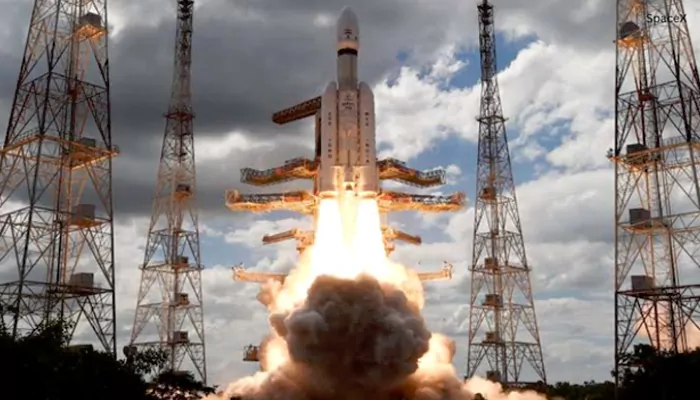Unveiling the Celestial Drama: A Journey Through the 5 Phases of the 2024 Total Solar Eclipse on April 8th
- Admin
- 1 year ago
- 5 minutes read

Today, the skies over North America will be graced by the breathtaking spectacle of a total solar eclipse. This celestial event will cast its shadow over the continent, offering a mesmerizing display to those fortunate enough to witness it. Across 15 U.S. states, Mexico, and Canada, a path approximately 115 miles wide will bear witness to the eclipse's totality, as the moon completely obscures the sun's radiant disk. While all of North America and Central America will be treated to at least a partial eclipse, those within this narrow corridor will experience the awe-inspiring beauty of a total solar eclipse.
Don't be in the Dark about the 2024 Total Eclipse
There are three primary types of solar eclipses, each offering a unique spectacle. A total solar eclipse, such as the one observed on April 8, occurs when the moon's proximity to Earth enables it to completely block the sun's disk. This captivating event casts the world into an eerie darkness as the moon takes center stage in the sky.
Occasionally, the moon's elliptical orbit places it farther from Earth, causing it to appear smaller. During these times, an annular solar eclipse occurs. In this mesmerizing display, the moon covers only a portion of the sun, leaving a radiant ring of light encircling its silhouette. The last annular eclipse visible over the U.S. graced the skies on October 14, 2023.
Partial solar eclipses, on the other hand, result from the imperfect alignment of the Earth, moon, and sun. In these instances, the lunar disk obscures only a fraction of the sun, creating the illusion of a celestial nibble.
Stage 1- First Contact
Mostafa Alkharouf captured this close-up view of the sun during the eclipse from Jerusalem.

(Image credit: Mostafa Alkharouf/Anadolu Agency via Getty Images)
As the eclipse begins, the moon delicately edges in front of the sun, initiating a partial solar eclipse. During this phase, the sun takes on the appearance of a partially devoured fruit, with the lunar silhouette creating a crescent-shaped "bite" that gradually expands towards totality.
In the initial phase of the total solar eclipse, spectators may witness the fleeting presence of shadow bands, dark bands that swiftly dance across surfaces like buildings or the ground. Additionally, Bailey's beads, formed by sunlight filtering through the rugged lunar terrain, might emerge along the moon's perimeter. These phenomena recur during the subsequent partial eclipse following totality.
On April 8, the partial eclipse's commencement will be observable near Pu‘uali‘i, Hawaii, starting at 6:27 a.m. local time (12:27 p.m. EDT, 1627 GMT).
Stage 2- Second Contact

The diamond ring effect that marks the oncoming totality (Image credit: NASA/Carla Thomas)
The initial contact phase will endure for approximately 70 to 80 minutes, culminating with the emergence of a radiant pinpoint, commonly known as the "diamond ring," on the moon's periphery. This signals the onset of the second contact stage, foretelling the imminent totality.
April 8 will witness the total solar eclipse descending upon Mazatlán, Sinaloa, Mexico, commencing at 9:51 a.m. local time (12:51 p.m. EDT, 16:51 GMT).
Stage 3- Totality
Ring of fire solar eclipse photographed from district Simeulue, Aceh, Indonesia on December 26, 2019.

(Image credit: Khalis Surry/Anadolu Agency via Getty Images)
During the third stage of a total solar eclipse, known as totality, the moon completely obscures the solar disk. This phenomenon unveils the outer atmosphere of the sun, the corona, which appears as white streamers at the moon's edge. Normally overwhelmed by the solar surface's brightness, the corona becomes visible during totality. Additionally, the inner atmosphere of the sun, the chromosphere, may manifest as a delicate aura encircling the moon.
Moreover, totality offers a rare glimpse of stars and planets typically obscured by daylight. On April 8, totality begins in Mazatlán, Sinaloa, Mexico, at 11:07 a.m. local time and in Near Florentino Ramos Colonia, Texas, at 1:27 p.m. local time. The duration of totality varies depending on the observer's location, with Mexico experiencing 40 minutes and 43 seconds, the U.S. collectively 67 minutes and 58 seconds, and Canada 34 minutes and 4 seconds of this awe-inspiring celestial event.
Stage 4- Third Contact
Bailey's beads seen at the edge of the moon during a solar eclipse in 2017 (Image credit: NASA/Aubrey Gemignani)
As the fourth stage of the total solar eclipse unfolds, known as third contact, the moon begins its departure from the sun's disk, marking the conclusion of totality and the onset of the second partial eclipse phase. Similar to the second contact phase, a brightening emerges on the opposite side of the moon. During this juncture, enthusiasts have another opportunity to observe Baily's Beads along the moon's edge and shadow bands on surrounding structures and terrain, echoing the phenomena witnessed during the second contact stage. The total solar eclipse culminates along the Atlantic coast at 5:16 p.m. local time (3:46 p.m. EDT, 1946 GMT).
Stage 5- Fourth Contact
The fifth and concluding phase of the total solar eclipse unfolds as the moon gradually distances itself from the sun's disk, signifying the cessation of partial eclipse occurrences. By fourth contact, the moon no longer obstructs any part of the sun's brilliance. Thus, the total solar eclipse of 2024 draws to a close. On April 8, along the Atlantic coast of Newfoundland and Labrador, the partial eclipse phase concludes at 6:18 p.m. local time (4:48 p.m. EDT, 2048 GMT).



.WEBP)









